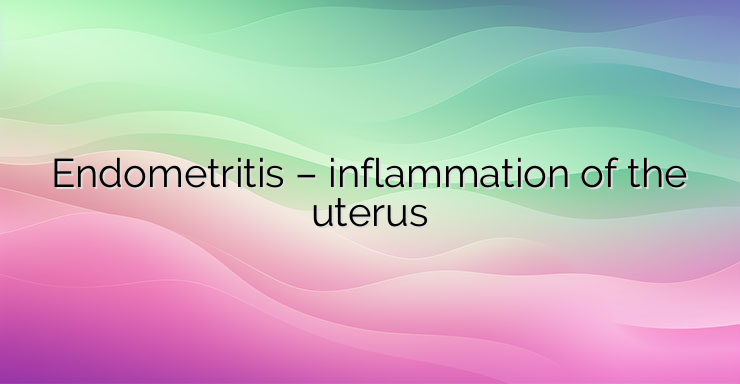The uterus consists of three layers: – outer Serosa; – middle Myometrium (muscular layer); – internal Endometrium (uterine lining). Endometritis is an inflammation of the inner layer, the endometrium. 1. How does endometritis occur and what causes it? The most common reason for the development of this disease is the entry of pathological microorganisms in an ascending way from the vagina into the uterine cavity. It is also possible to spread by blood route or by descent, but these are much rarer. The causative agents of the infection are most often staphylococci, streptococci, chlamydia and anaerobes. The internal opening of the cervix is a physiological barrier against the penetration of various microorganisms. This barrier is broken during menstruation, childbirth or transcervical manipulations, for example curettage, and the risk of infection increases many times. 2. What are the shapes? Acute endometritis Chronic endometritis Acute inflammation of the endometrium occurs most often in the postpartum period or after an abortion. Chronic endometritis occurs when the uterus is permanently damaged – by IUDs, infected polyps, pelvic inflammatory disease or radiation damage. 3. What are the symptoms? The first symptoms are associated with menstrual disorders such as menorrhagia or metrorrhagia and discrete pain in the lower abdomen. When the infection spreads in the muscle layer of the uterus (Endomyometritis), there is also an increase in body temperature and an increase in abdominal pain. NEWS_MORE_BOX 4. Diagnosis During the gynecological examination, it is possible to detect the discharge of pus from the cervical canal, an enlarged and painful uterus, when the myometrium is also affected. In the initial stages of the disease, laboratory indicators indicating the presence of infection are still normal. The diagnosis of chronic endometritis is made after the exclusion of any other causes of genital bleeding and after its confirmation by histological examination of material from an abrasion of the uterine cavity! 5. Differential diagnosis or what other diseases can have similar symptoms? Carcinoma of the cervix; Carcinoma of the body of the uterus. The diagnosis is made after cytological and histological examination. Very often, acute and chronic endometritis is due to: retention of parts of chorionic villi or infected membranes after childbirth or abortion. In case of doubt, it is necessary to monitor the serum levels of beta-hCG (human chorionic gonadotropin). 6. Therapy Endometritis and myometritis caused by ascending microorganisms should be treated with antibiotics. The use of hormonal preparations containing estrogens can also be discussed in some cases, as they accelerate the regeneration of the uterine lining.


Leave a Reply